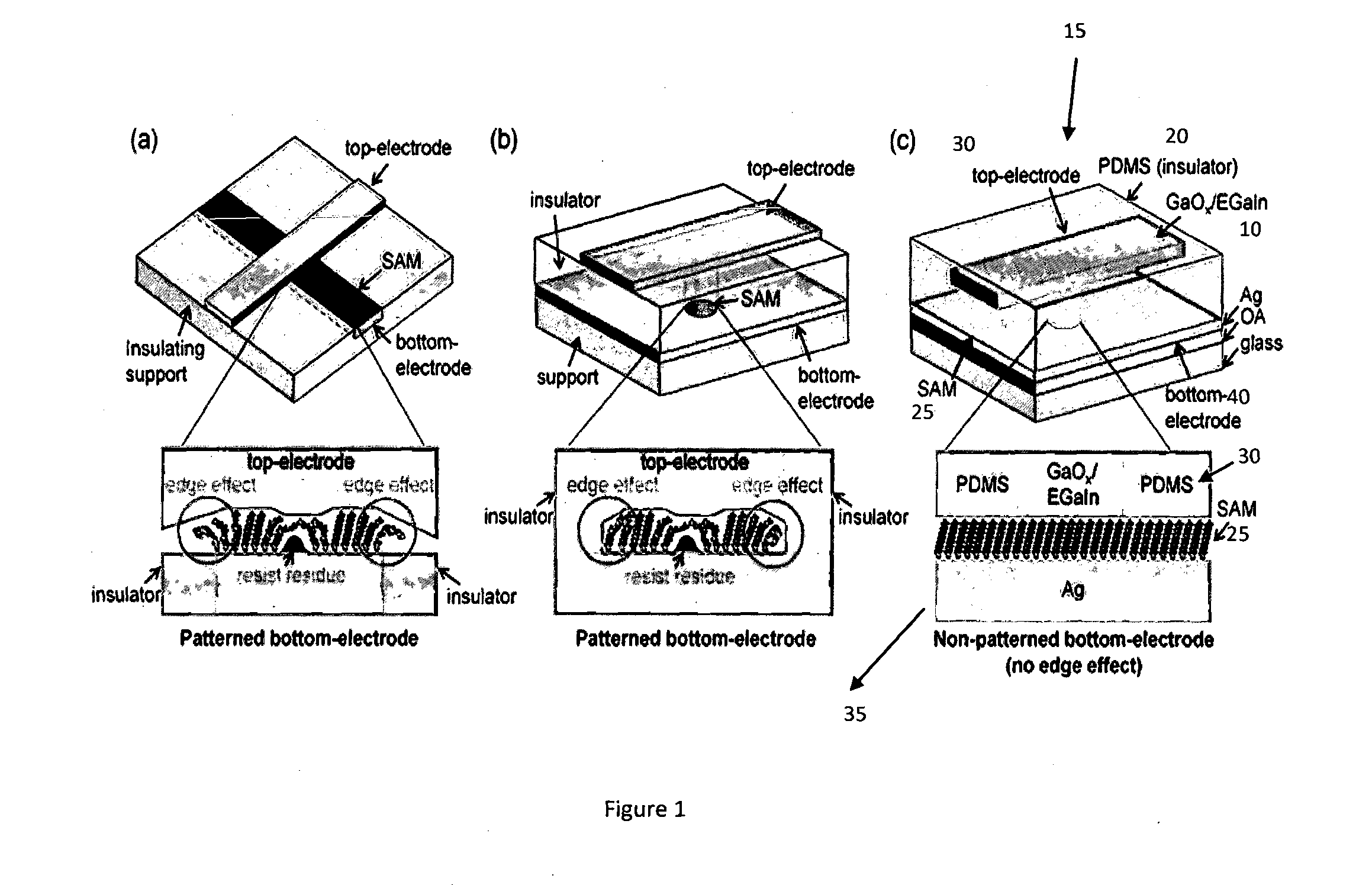Electrical contact
a technology of electric contact and contact plate, which is applied in the field of electric contact, can solve the problems of difficult experimental approaches, unanswered questions regarding the details of the charge transport mechanism of the molecule-electrode interface, and the failure of the fabrication of such devices, etc., and achieves the effects of low viscosity, simple and widely used, and not minimized surface free energy
- Summary
- Abstract
- Description
- Claims
- Application Information
AI Technical Summary
Benefits of technology
Problems solved by technology
Method used
Image
Examples
example
[0081]Junctions with GaOx / EGaIn Top-Electrodes
[0082]The EGaIn spontaneously forms a self-limiting layer of GaOx in air with a thickness of 0.7 nm and because of its non-Newtonian properties this material can be shaped. Therefore, unlike Hg, GaOx / EGaIn forms stable structures in PDMS micro-channels. The oxide layer also prevents the bulk EGaIn from alloying with the gold or silver bottom electrode which adds stability to junctions. The oxide layer is defective and contains oxygen vacancies, and it is highly conductive.
[0083]The precision of the data, that is, the width of the distributions of the values of J (see FIG. 2 for definitions), generated using junctions formed with cone-shaped tips of GaOx / EGaIn relies on the operator because the formation of the tips and bringing the tip in contact with the SAMs are usually performed with a manually operated manipulator. (Alternatively, piezo-controlled manipulators may be used.) For instance, the contact size, tip roughness, and the speed...
PUM
| Property | Measurement | Unit |
|---|---|---|
| Thickness | aaaaa | aaaaa |
| Thickness | aaaaa | aaaaa |
| Diameter | aaaaa | aaaaa |
Abstract
Description
Claims
Application Information
 Login to View More
Login to View More - R&D
- Intellectual Property
- Life Sciences
- Materials
- Tech Scout
- Unparalleled Data Quality
- Higher Quality Content
- 60% Fewer Hallucinations
Browse by: Latest US Patents, China's latest patents, Technical Efficacy Thesaurus, Application Domain, Technology Topic, Popular Technical Reports.
© 2025 PatSnap. All rights reserved.Legal|Privacy policy|Modern Slavery Act Transparency Statement|Sitemap|About US| Contact US: help@patsnap.com



